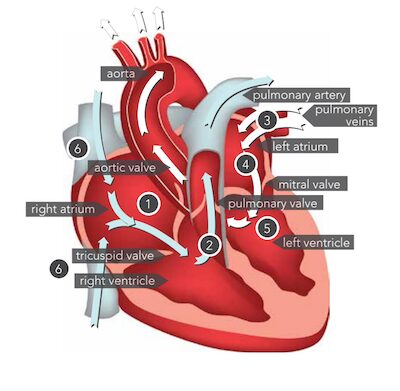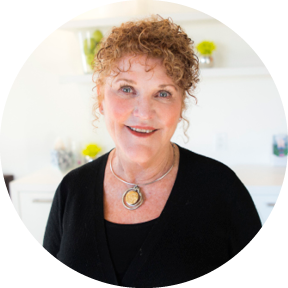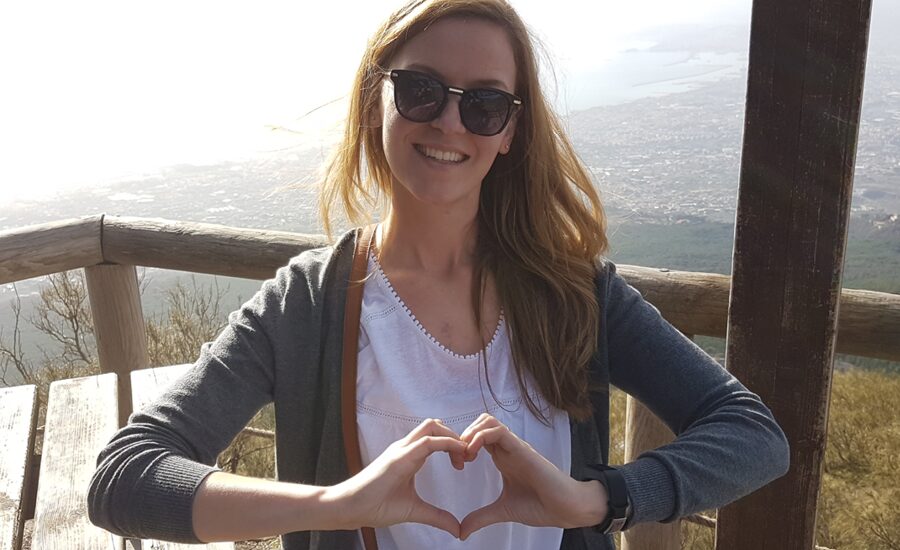One of our INLIV teammates, Jennifer Michaud, shares her heart story in this three-part series.
Part 1 of 3.
February is recognized as Heart Month across Canada, in an effort to increase public focus on cardiovascular health and awareness of heart disease and the many ways it affects 1.3 million Canadians and their families. This month is especially important to me as I am an open-heart surgery survivor, and since my surgery almost three years ago it has become a mission for me to make sure everyone values the health of their hearts.
I am an open-heart surgery survivor, and since my surgery almost three years ago, it has become a mission for me to make sure everyone values the health of their hearts.
My heart story begins on the day after I was born at the University of Alberta Hospital in Edmonton. Doctors had noticed that my lips appeared bluish and took me from my parents’ room to be examined; blue lips or skin in newborns can be an indicator of a heart defect that prevents blood from being fully oxygenated, and is called cyanosis.
Within the first 12 hours of my life my parents were told that I had been born with a hole in my heart, and that I would require more testing to determine the full extent of the defect.
Even today my Mom remembers the feelings of dismay: “I was so upset, so worried. My baby was sick and they couldn’t tell me to what extent – I was devastated.” My parents were able to take me home that week, but with strict instructions to return the next week (and the next after that) so that I could continue to be tested and monitored.

Within my first month, my Pediatric Cardiologist was able to provide a full diagnosis of my condition – although the hole in my heart, also known as ventricular septal defect, had closed itself without intervention (this can happen in cases of a small hole in the heart), it was determined that I also had been born with aortic stenosis; my aortic valve (which pumps oxygenated blood from the heart to the rest of the body) was bicuspid, meaning it had two leaflets (valve flaps) instead of the normal three, and my aorta was narrow.
My parents were told that I would have to be seen by my Pediatric Cardiologist every year for ongoing monitoring – so annual echocardiograms, x-rays, ECGs and stress tests (which started when I was older and able to run on a treadmill) became normal for me. My mom also remembers that in the face of this unexpected diagnosis, my doctor was very kind and gave her advice on how to help me live my best life.
He said that my only restrictions on activity would be that I could not participate in competitive sports like soccer, hockey, football, etc.
“Life can be beautiful and enriching for your daughter, without having to put any extra tax on her heart,” he told Mom.
“Put your daughter into the Arts or Sciences and have her focus her efforts on these paths in life.”
“Life can be beautiful and enriching for your daughter, without having to put any extra tax on her heart,” he told Mom. “Put your daughter into the Arts or Sciences and have her focus her efforts on these paths in life.”
“So that’s what we tried to do,” my Mom tells me. “We led you in those directions to help you get the most out of your life, so you could strive for goals that were achievable within your medical limitations.”
This might explain why, although I was able to participate in some lighter activities like baseball and swimming, I never felt a desire to try out for the school soccer team. Instead I devoted my time and efforts to the stage, rehearsing and performing in numerous musical theater productions through my school years and even now, well into adulthood.
I had a childhood filled to the brim with artistic hobbies and education, and have my doctor and my parents to thank for introducing me to my life-long passion for the theatre. I am eternally grateful to them for making that choice to provide me with opportunities to develop my self-confidence, artistic and physical abilities and love of teamwork.
I had a childhood filled to the brim with artistic hobbies and education, and have my doctor and my parents to thank for introducing me to my life-long passion for the theatre.
There was something else they did consistently throughout my childhood that I didn’t consciously recognize until talking to my Mom for this blog post, and something that I hope other parents take note of: when they spoke about my heart condition in front of me, which wasn’t too often, it was almost never in a negative context.
My mom puts it this way:
“We made a conscious decision to bring you up as though your condition was as natural for you as having brown eyes.
Yes, you had a heart condition; yes, you had to visit the cardiologist once a year; yes, you had to take antibiotics before you went to the dentist. Did that mean you needed to live your life under a cloud of illness and worry?
Not at all.
We made a point of speaking very neutrally about your condition in front of you and we answered questions you had without negativity. We didn’t hide anything from you, although sometimes we made the information age-appropriate.
We really just focused on accepting your condition as fact, refusing to indulge in fear of the unknown, and helping you live a full and enriched life.”
This, along with their encouragement to participate in hobbies that I’d be able to physically handle turned out to be a major influence on how I would live my life – secure in the knowledge of my heart condition without any preconceived emotional response to it. My heart condition was simply part of who I was: I had brown eyes, a decent singing voice, a love of history, and a heart condition.
My heart condition was simply part of who I was: I had brown eyes, a decent singing voice, a love of history, and a heart condition.
My childhood was (heart) incident-free, and I was fortunate to be able to continue seeing the cardiologist who diagnosed me at birth until the age of 25. (For those of you who are fans of Friends, it was a little like Ross Gellar at his pediatrician’s office!)
I was very happy to continue to be seen by my doctor and would likely have continued to see him until he retired, but at 25, my fiancé and I decided to move from Edmonton to Calgary. At that point I had to “graduate” into the adult system, and was referred to a Calgary-based adult cardiologist. The move into the adult system took a number of months and phone calls to ensure that the referral would go through so I would have as much continuity of care as possible. I began seeing my new cardiologist at the Southern Alberta Adult Congenital Heart Clinic at Peter Lougheed Centre just before I turned 26.
My first appointment of tests went smoothly and I was advised that as an adult in good health and without any concerns on my tests for years prior, I would now need to be seen once every two years. When I went back two years later, I received my first shock ever regarding my heart health when my doctor told me that although my valve was still looking relatively healthy, my test results suggested that it was deteriorating and I would likely need to have surgical intervention on it by the time I was 50 years old.
This was the first time in my entire life that I had been told my condition was serious enough to warrant surgery, albeit not immediately. With the way I was raised to think about my heart condition, it honestly had not occurred to me that it would ever become a major health issue. But while it was initially upsetting, over time I got more used to the idea and was able to put it out of my mind – and I wouldn’t have to even consider it for another 20 years or so. By the time I received the notice for my biannual appointment at the age of 29 to return to the cardiologist, I had almost forgotten about it.
Concerned about your heart health? INLIV can help.

“It is important to be proactive when it comes to your health: seek advice when noting new symptoms and get help early; know your numbers such as blood pressure, BMI, cholesterol levels and be an active participant in your own healthcare.
Our Total Health Management program is an excellent primary care program that can help support your ongoing health needs. We also have a Proactive Health Assessment program that can offers health screening and provides you with a snapshot of your health with recommendations for preventive care.“
– Dr. Wendy Smeltzer, Medical Director at INLIV


